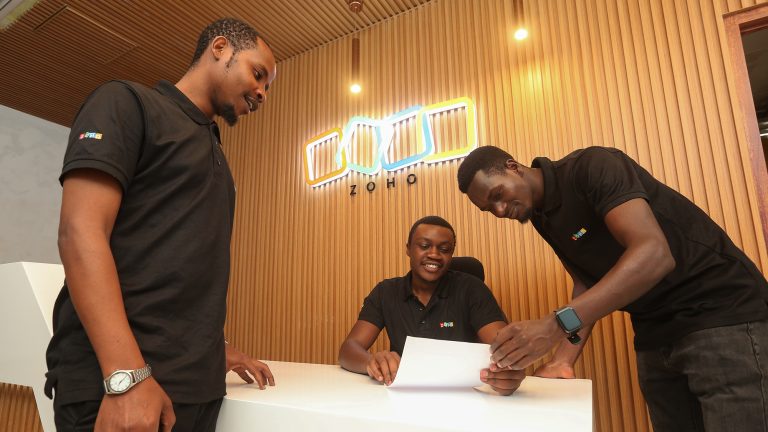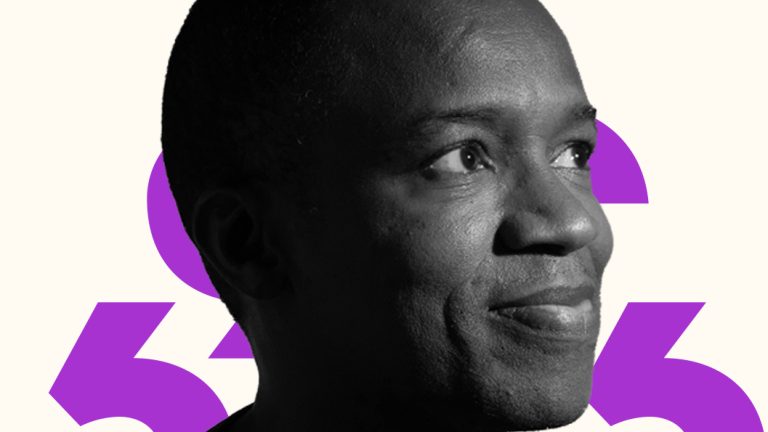For Haitian migrants that have made grueling journeys to the U.S.-Mexico border, the language barrier is one of the last roadblocks to entering the U.S. Jean Jeef Nelson, a case manager in San Diego and Tijuana for Haitian Bridge Alliance, a grassroots organization that assists thousands of Haitian and Black migrants, told Rest of World many of his clients struggle to use CBP One because they don’t speak one of the supported languages. CBP One, an app developed by U.S. Customs and Border Protection, became mandatory to schedule initial asylum appointments in early May.
“We were seeing that lots of people who don’t speak either Spanish or English are paying other people to apply for them. And those who don’t have any money are usually stuck,” said Nelson, adding that his clients have paid as much as $400 to others to book their appointments.
CBP One now nominally supports five languages: English, Spanish, Russian, Portuguese, and Haitian Creole. But crucial portions of the app, such as user registration and two-factor authentication, are still only accessible in English and Spanish. The Haitian Creole sections have been criticized for shoddy translations, contributing to the demand for proxy bookings.
Professional translators and immigration experts say the CBP One app is just one part of the larger problem of language access in the immigration system. For migrants who aren’t proficient in English or Spanish, inconsistent language support makes an already complicated asylum system even harder to navigate.
“At the end of the day, it is the responsibility of the government to make sure that the population that needs to be served gets access in the language that they understand,” Guerline M. Jozef, co-founder and executive director of Haitian Bridge Alliance, told Rest of World.
Rest of World had previously reported on CBP One glitches and digital literacy barriers, but the app’s translation issues are alarming given the longstanding presence of Haitian migrants at the border. Over 70,000 Haitian citizens have presented at a U.S. port of entry since October 2022, with nearly 40,000 of those encounters at the U.S.-Mexico border, according to self-reported data from Customs and Border Protection. Haitian Creole is the most-spoken language among these migrants. Despite its shared roots with French, Creole has its own grammatical rules, and many similar-sounding words that have different meanings.

Earlier this year, Haitian Bridge Alliance and other migrant advocates raised the alarm about language barriers with CBP One. CBP eventually launched support for Creole on the app in February. Despite the crush of users, though, advocates told Rest of World the quality of the current Creole translations is spotty at best. Users can only select Creole after a full user registration process in English and Spanish, including two-factor authentication. Error messages, drop-down menus, and navigation tools continue to display only in English.
In multiple instances, the word “customs” in Customs and Border Protection is mistranslated as the Creole word for cultural traditions, instead of the word for a government agency, Creole translators told Rest of World. None of the text in the app’s user terms and conditions has accent symbols, an essential feature of the Creole alphabet.
In other sections, entire paragraphs are unreadable. Creole translations in CBP One include spaces in the middle of words, or phrases with no spaces between words, creating a gibberish string of letters. In a CBP-published “fact sheet” on how to use the app, an entire sentence was written as a single word, showing a lack of basic copyediting.
“It’s worse than Google Translate,” said Laura Wagner, a Haitian Creole team lead at Respond Crisis Translation, a coalition of over 2,500 translators that provides interpretation and translation services for migrants and asylum seekers around the world.
“It’s worse than Google Translate.”
Confusing and unintelligible Haitian Creole translations are a persistent issue for Haitians trying to navigate complex U.S. immigration systems, Wagner told Rest of World. The appointment scheduling portal for U.S. Immigration and Customs Enforcement (ICE), for example, also includes nonsense translations of country names. Those errors closely resemble ones made by Google Translate.
“Any human who is familiar with any kind of written language would look at that and say, that looks wrong,” said Wagner, who recommends CBP hire language professionals to review the Haitian Creole text on the app. “It shows that they truly don’t care whether anybody understands it.”
CBP One is reinforcing its commitment to the app as the central gateway for migrants. May 11 marked a major shift in immigration policy. After almost three years of turning migrants away on the grounds of public health, an early pandemic policy called Title 42 expired. The dynamics at the U.S.-Mexico border have since been in a state of flux, with some forecasting a spike in migrants trying to apply for asylum. In this new era, the previously optional CBP One app has become mandatory for almost all migrants who want to book an initial asylum review appointment.
Many migrants from Central and South America arrive speaking none of the languages available on the CBP One app. Migrant advocacy groups told Rest of World that translations and other language resources are urgently needed in a host of Mayan Indigenous languages, including K’iche’, Q’eqchi’ and Mam. Other migrants and refugees at the border have traveled from China, Afghanistan, Sudan, and Mauritania in a desperate bid to enter the U.S., and similarly may not understand the app.
“A lot of Mayan Indigenous languages, in particular, there’s a demand for those from migrants coming from Guatemala and other Central American countries, as well as some Indigenous languages from southern Mexico,” Sebastian Quinac, director of the Indigenous Language Office (ILO), a project by Indigenous Alliance Without Borders, told Rest of World. After visiting a shelter near the Nogales point of entry on the Arizona-Mexico border, Quinac said he noticed a particular demand for the Mam language among migrants. Guatemala alone is home to two dozen Indigenous languages, and an array of regionally specific dialects.

It’s difficult to obtain firm numbers on how many migrants trying to enter the U.S. speak an Indigenous language. Many mask their identity due to stigma and fears of discrimination if authorities find out they are Indigenous, according to Quinac. Frequently, CBP does not properly fill out forms meant to identify primary language and race, marking Indigenous migrants inaccurately as Hispanic. CBP officials were also found to have wrongfully assumed that Indigenous language speakers from Latin America speak Spanish.
An annual report by the Department of Justice breaks down the proportion of languages spoken in U.S. immigration courts. The fifth-largest category in 2018 — the most recent year the report was published — is marked simply as “language unknown.”
Before Title 42 limited the entry of migrants into the U.S., Casa Alitas shelter in Tucson, Arizona, collected its own data through interviews with thousands of migrants who passed through its doors. Between 2017 and 2019, roughly one in five migrants who were interviewed at the humanitarian shelter selected an Indigenous language as their primary language, according to Blake Gentry, the founding director of ILO and co-author of the study. This did not represent those who hadn’t made it across the border.
In a public statement shared with Rest of World, the International Mayan League, which advocates for the rights of Indigenous migrants, described these communities at the border as “invisible in plain sight.” The statement decried the Biden administration for the indigenous language barrier, claiming many migrants are consequently not receiving due process in asylum review.
“Video or audio materials to address low literacy levels and meet the needs and rights of our peoples have previously been recommended,” the statement reads. “Instead, the U.S. government is expanding the use of the CBP One App for asylum scheduling, placing undue burden on asylum seekers from the most marginalized, discriminated, and persecuted peoples and communities.”
That lack of access comes with real legal risks. All U.S. federal agencies, including the Department of Homeland Security (DHS) and CBP, are required by law to take “reasonable steps” to provide language access to people with limited English proficiency (LEP). Federal agencies that do not take these steps could violate Title VI of the Civil Rights Act of 1964, which in part prohibits discrimination on the basis of race, color, or national origin, Zefitret Molla, an immigration researcher at the Center for American Progress, told Rest of World.
In recent years, there have been frequent complaints filed against DHS for language access discrimination. “There is ample evidence, for example, that many asylum seekers do not know they have a right to meaningful language access — and are deported because they are unable to win their asylum case without such access,” Molla told Rest of World.
It’s not clear if CBP One meets the requirement for “meaningful” language access. Official policy states that if a migrant, such as a Mam or Haitian Creole speaker, can provide “a preponderance of evidence” that they couldn’t use the app because of a language barrier or illiteracy, they can be exempted from using the app. That guidance is detached from reality, according to Mary Kapron, a researcher for Amnesty International in Mexico City. A recent Amnesty delegation to the border found that many migrants have been stopped from approaching a port of entry, unless they already have a CBP One appointment.
“It’s completely ironic,” ILO’s Gentry told Rest of World. “In what language are they communicating with the border patrol officer about that problem?”



